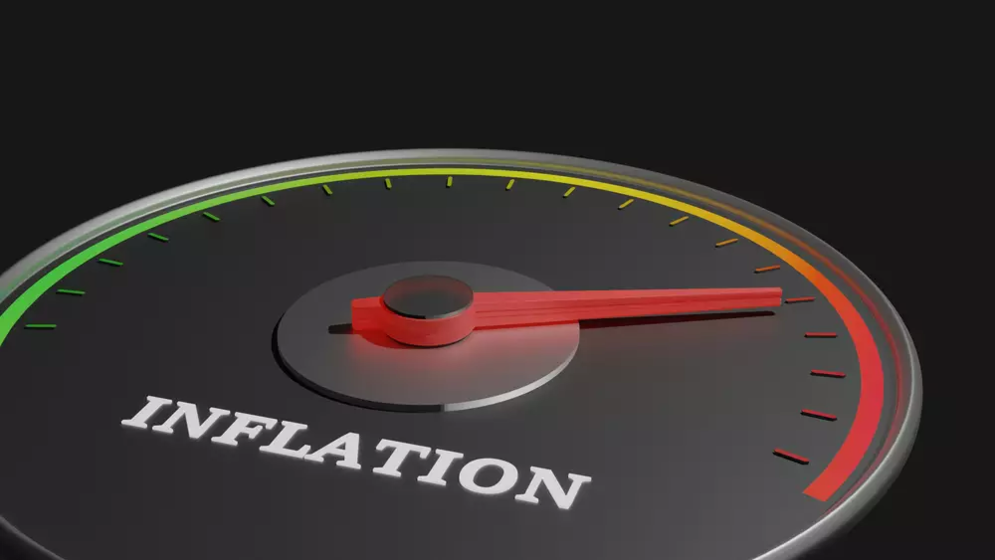Will the pendulum be swinging back, against all the odds? Maybe, and while this space has admittedly been stunned about the sheer size of that inflation bout, it never bought the notion of this to be a multi-year phenomenon that will destroy economies and impoverish the masses. What we are witnessing has no doubt been a massive shock to the system, but it might well go down in history as a peak inflation event mainly caused by non-sensical trade policies and geopolitical conflict.
To be sure, if you read JP Morgan’s horror scenario of 380 dollar crude in the worst-case Russian cut in supplies, you wonder. And if we are being confronted with recent European PPI numbers in the mid- to high-30s percent year-on-year, we can’t believe what in the world is happening. And of course, the war has kind of changed everything and makes it all the harder for anyone to predict the future in markets and in general, but in the end, we have to go by what is observable and make our own conclusion.
As always, it’s probably best to make sure we are as far away from mainstream predictions as possible. So, let’s have that closer look and summarise observations of the past week. The grisly inflation readings have mainly been from March through May, and we may be in for another couple of months of bad numbers. But if you watch carefully what’s currently happening in commodity markets, there appears to be quite a bit of light at the end of the tunnel.
Even the FT in an
article over the weekend has picked up on Copper prices tumbling. From the March high of 500 future prices plunged to 360 at the Friday close, way below the pre-war trading range in the low 400s. But it’s obviously not just Copper. Zinc fell from its April peak of 4,500 to 3,000, again markedly below pre-war levels. Lumber futures almost halved. Iron Ore dropped from 950 to 740. Even Wheat futures got slammed, sky-diving from almost 1,300 in May to 850.
While there is no such retreat in prices detectable in crude, gas, and coal markets, the overall Bloomberg Commodity Index has after all sharply corrected by 15% in past 3 weeks. Nothing’s for certain in this new world, and much will obviously depend on what the oil cartel will manage or not manage to do, what Moscow will decide on gas deliveries to Europe, and how coal is meant to substitute ceased gas-based power generation.
What are the reasons for this moderation in prices? According to the Fed, it hasn’t even begun hiking rates. Is it already the impact of a general demand destruction and the harbinger of a global recession? But then, the modern economies wage spiral and service inflation should also be contained, which it certainly is not at this point. Is it the weak state of the Chinese economy due to unique pandemic measures? Or the hit on emerging markets in general due to the overly strong dollar?
In any case, financial markets have been getting the gist of it. US Treasuries led a broad government bond rally in recent days and spiked on Friday, having yields crater. US 10-year rates dropped to a close of 2.88%, from a June high of near 3.50% in June. The 2/10-year yield curve re-flattened and the spread fell to below 5bp again, on the verge of inversion and confirming the bond market’s view that a recession is in the making.
Even Italian 10-year rates that had skyrocketed to 4.20% and put the shivers down the ECB grandes’ spines, melted by 30% to a week’s close of 3.09%. Swaths of European companies are no longer competitive in light of gas prices and will hit the wall. Christine Lagarde’s pledge to throw overboard any and every convention the Eurosystem is based on, to control the German/Italian yield differential by only tapering Bunds but using the proceeds to support Italian paper, must also have had its effect.
What might all this be trying to tell us? Unless crude, gas, and coal explode from here by way of geopolitical tensions hardening – nothing the Fed can in fact do about, as I pointed out in a February
post – the price contraction in many commodities points to lower manufacturing input prices, implying lower PPI readings going forward and tamer CPIs down the road. The bigger conundrum here is the much larger service sector in Western economies and how its price pressures will behave in the scheme of things.
The other aspect is long rates. If the curve plunges into inversion, the question will be how hard economies and businesses will be hit. If we duck a major downturn and manage to glide through a mild recession with a then growing anticipation that the Fed may be done soon or even revert its monetary stance, the lower rate environment should actually be good for risk assets and the ailing stock market again.
